Actuators are the brain of a damper. Whether it’s manual or electric, the actuator provides the means to open and close the damper’s blades.
We explored actuators in a previous blog, including the different types available and considerations for selecting the right kind.
In this blog, we are going to focus on actuator action.
A Quick Review
Before we begin, let’s quickly review the three types of actuators and what they do.
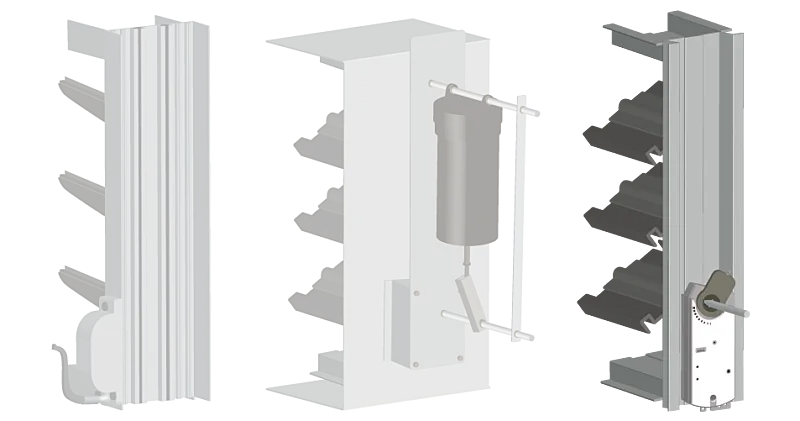
Manual: Manual actuators require hand operation. An operator must be able to access the actuator to control the damper’s blades. Hand quadrants, worm-gear actuators, and chain-and-wheel actuators are manual. These actuators are best used on dampers that rarely need to open and close.
Pneumatic: Pneumatic actuators use air pressure to control the damper’s blades. A central air compressor will fill the actuator and expand its internal bladder, which then drives the actuator to rotate the damper’s blades. These actuators are best suited for older projects with pneumatic equipment already installed.
Electric: Electric actuators have an electric-powered motor that controls blade rotation. They require power to operate. These actuators are the most common type because of their versatility and ease of use. Electric actuators can be tied to central computer systems to fully automate each damper. There are additional options available like remote test buttons and position indication switches that provide more control.
For this article, we will focus on electric actuators.
Driving Blade Rotation
Every actuator is designed to rotate the blades of the damper, regardless of type. Actuators are tied to the damper’s driving blade axle. The driving blade controls the rotation of all other damper blades, via the damper’s linkage.
In other words, the linkage will translate the rotation of the driving blade axle to all blade axles. Otherwise, you would need an actuator for each damper blade.
The driving blade axle will typically extend past the jamb of the damper to accommodate the actuator. Actuators often need at least three extra inches of space to properly fit onto the axle.
Manufacturers often provide an extended shaft kit, which attaches to the driving blade axle and extends it to the necessary length. The goal is to provide enough axle for the actuator to hold and properly rotate the blade.
On-Off Action
The standard actuator action is “on-off”. That means that the actuator will rotate the blades to either fully open (on) or fully close (off) the damper. The phrase “on-off” also refers to the electric actuator’s power state.
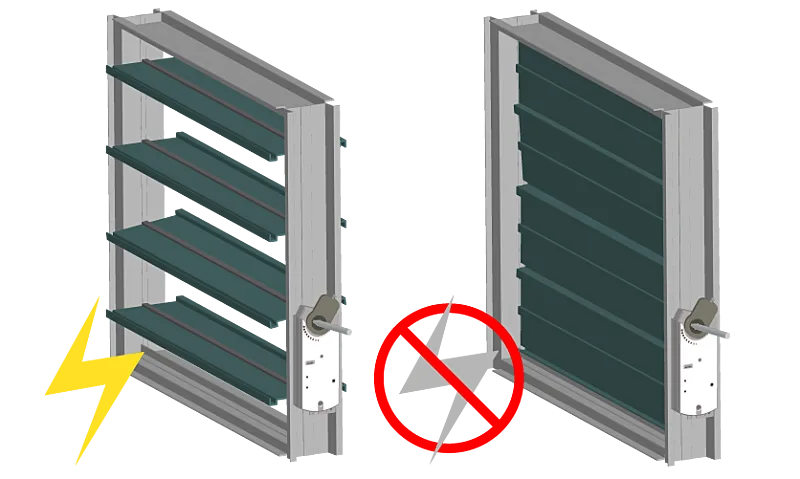
For on-off, the actuator is configured to open the damper when it receives power and close when it loses power. We also refer to this action as “power open-spring closed”, because the actuator will utilize an internal spring to drive the blades closed during power loss. Dampers can also be configured for “power closed-spring open” as a failsafe during an emergency, though this configuration is often reserved for smoke and fire-smoke dampers.
Control dampers will open and close on a regular basis throughout the day, as air conditions change in each zone of the building. When a room needs air conditioning, the control dampers involved with that zone will open to provide the necessary airflow and close when the zone is sufficiently cooled or warmed.
The actuators attached to these dampers provide the opening and closing action. The system will power each actuator when one needs to open, then remove power when the damper needs to close.
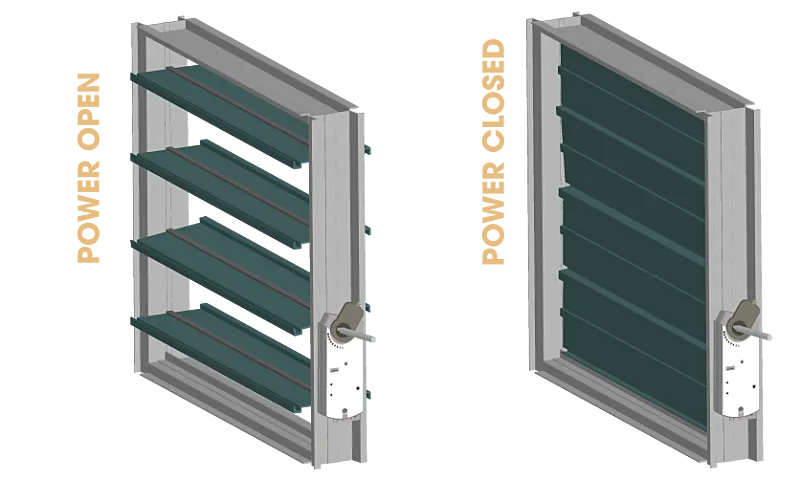
Most electric actuators are “on-off”, but certain actuators can hold additional power states.
Modulating Action
Certain actuators can hold several power states, which hold the damper’s blades between fully open and fully closed. This is known as “modulating” because the actuator can adjust the blades to states other than open and closed. Modulating actuators can help a damper fulfill two roles at once: air control and pressure balancing.
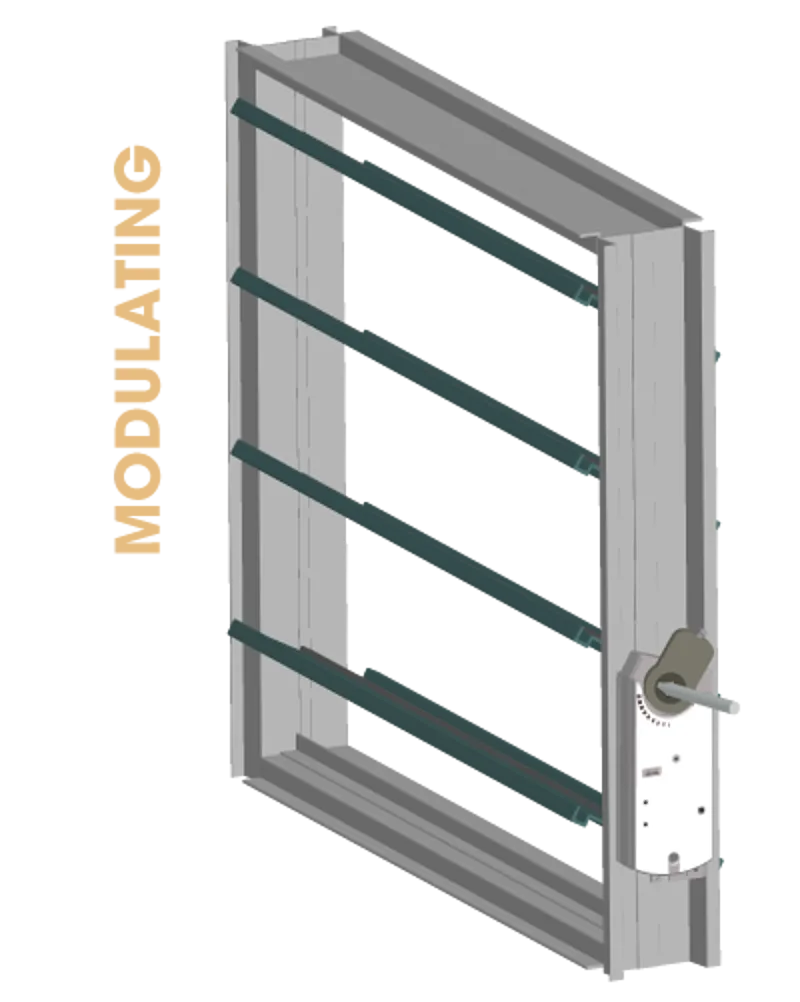
A control damper can also act as a balancing damper by holding its blades at a specific angle. This reduces the pressure of the airflow, to help keep it “balanced” between duct sections. Balanced air pressure alleviates common issues with drafts and cold or warm spots in rooms. These issues can be costly over time and can even put unnecessary strain on your HVAC system.
Modulation is excellent for both air control and regular air balancing. Modulating actuators are generally more expensive than a standard electric actuator, but the benefits of a two-in-one damper can save you money in the long run. You can use a single control damper for both situations.
Actuators and Your Project
Consider your project's requirements first. Each HVAC system consists of several applications that have their own needs. Review what you need before making any decisions on actuators or dampers. A top-of-the-line damper won’t do much good if it doesn’t meet the requirements.
And remember, you have plenty of options when selecting dampers and actuators. Choose the options that work for your project.
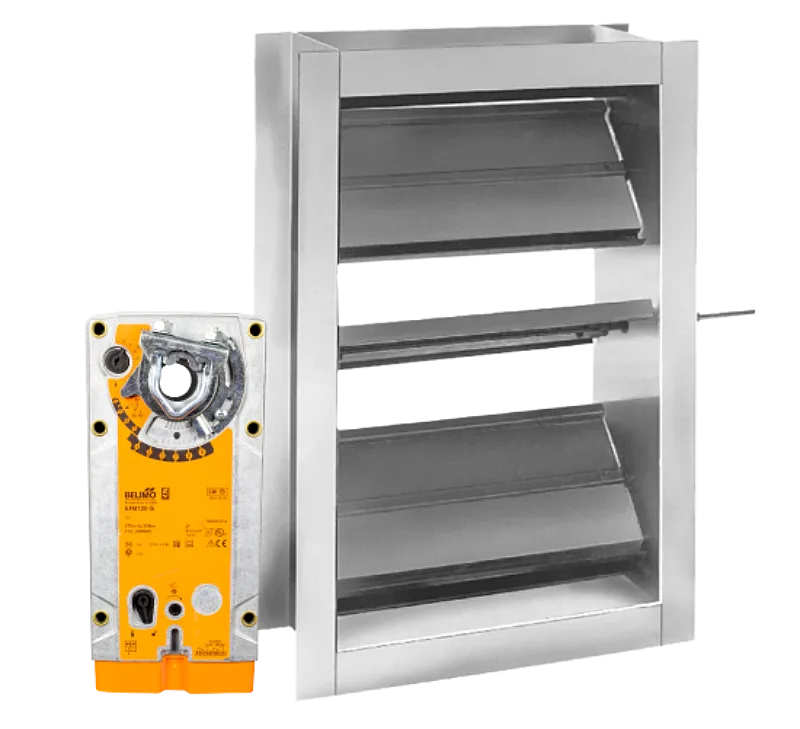
Dampers by AWV
Are you in the market for new control dampers? Starting up an HVAC project? AWV can build the perfect dampers to meet your requirements. We offer several damper types for a wide range of airflow needs, including options like modulating actuators. Start your next project with AWV. Contact us today and let’s get started.






